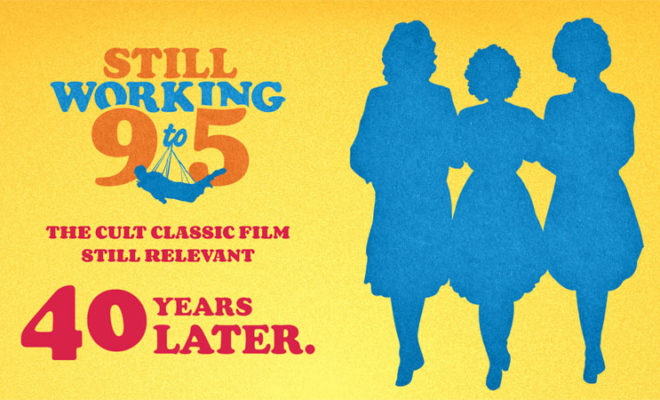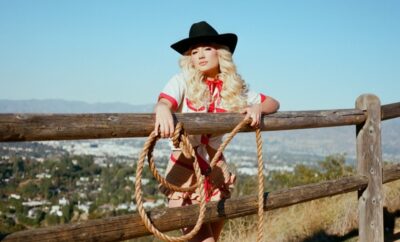
Movie Reviews
Still Working 9 to 5
By: Jennifer Vintzileos
If you grew up in the 80’s (like I did), then the names Violet Newstead, Doralee Rhodes and Judy Bernly may have meant something to you. Their ambition, their drive and their frustrations of breaking through the proverbial glass ceiling in the hit film 9 to 5 shook you up and drove you to work harder…minus the whole kidnapping your boss part. But how did 9 to 5come to be and why is it still relevant now? Through interviews with the cast and footage from the movie, viewers learn in Camille Hardman and Gary Lane’s Still Working 9 to 5 how the movie 9 to 5 was inspired by the women’s movement of the time. And, to this day, its message still resonates with many of us.
When the 9to5 Movement was in full swing, co-creator Karen Nussbaum would share with Jane Fonda the frustrations of being a female in the working world, especially with the clerical workers division. As Jane Fonda and future Producer of 9 to 5 Bruce Gilbert were looking to make social films, they decided that it was time to put the spotlight on the female demographic and give them a voice…or in the case of 9 to 5, three in particular. Bringing aboard comedic actress Lily Tomlin and singer/songwriter Dolly Parton to join Fonda before a script was even written gave writer and director Colin Higgins an advantage in character development and dialogue, while the stories from the 9to5 workers provided Higgins with the ideal script additions.
The story was simple: Violet (Lily Tomlin), Doralee (Dolly Parton) and Judy (Jane Fonda) are conspire to kidnap their horrid boss Frank Hart Jr. (Dabney Coleman) to keep him from outing Violet’s potentially fatal faux pas and utilize his forced absence to effect change within the company that would be beneficial. In December 1980 the movie premiered and became a hit! But the story doesn’t end there as Dolly Parton was nominated for an Oscar for writing the title song “9 to 5,” 20th Century Fox attempted to make a TV spinoff and decades later it was adapted into a Broadway musical with Parton penning the music.
Still Working 9 to 5 touches on more than just the movie. Granted, I did love hearing stories from Fonda, Parton, Tomlin and Coleman about making the film and what it meant to them, but their stories are only a fraction of what 9 to 5 gave women in America and even around the world…a stronger voice. From the political climate of the time when 9 to 5 was created up until now, Camille Hardman and Gary Lane give us a deeper view into the history of women’s rights and how that has evolved through the years. Tomlin, Parton and Fonda were and still are agents of change and have made it clear that their characters Violet, Doralee and Judy are an extension of the frustration that women have felt within the workplace and brought the reality to the forefront that their characters can be as innovative and hard-working (sometimes more) as their male counterparts. They are more than just note takers and coffee makers. They know the real changes that need to happen to bring forth a more productive workflow with minimal turnover. Their words, ideas and actions matter as they are the real voice of companies. Hardman and Lane capture that message perfectly.
What I absolutely loved more than learning about one of my favorite movies was how the message of 9 to 5 lives on. Granted, women are still fighting for their fair share and feeling more like equals in the working world…but they’re not hiding. They organize like Lily Ledbetter did for the Fair Pay Restoration Act. In the late 80’s women were taking on more managerial roles in companies. In the early 90’s, more women were inspired by Anita Hill to run for Congress and change the dynamic of politics. Change has made a difference. And while we have come so far, Lily Tomlin truly put it best saying, “We’ve got so much more to do.”





You must be logged in to post a comment Login